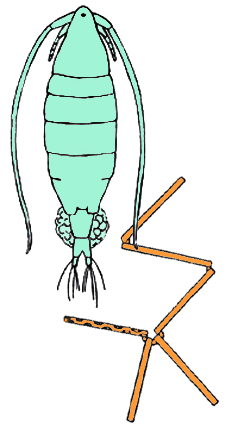Although I frequently describe myself as a pilgrim, I had never participated in an actual pilgrimage until earlier this month. I suppose now it’s official.
The festival of the Christo Negro (also called as El Santo, El Naza or a variety of other local names) is held annually on October 21st in the coastal town of Portobelo, Panama. The event is centered on a pilgrimage, which draws participants from throughout Central America, with many arriving on foot from Panama City or Colon, the country’s main hubs.
By walking these distances through the tropical heat, pilgrims seek atonement. Many crawl the final mile after entering town, with companions who brush the ground before them, pour candle wax onto their bare skin, and offer cries of “No dolor! No hay dolor!” as encouragement to cast off physical suffering for spiritual redemption. Also known as the “pickpockets pilgrimage”, it is rumored that career criminals will participate to wipe the slate clean each year.
Ultimately, pilgrims arrive at the parish of Iglesia de San Felipe, to seek blessings at the feet of the venerated statue of a cross-laden black Christ, carved life-sized from cocobolo, a dark, tropical hardwood.
The coastal town of Portobelo is a slim, humid crescent, braced at each end by Spanish forts built of coral blocks hewn from the reefs that border its well-protected bay. Historically, the town rose to global prominence in the late sixteenth century when it replaced the nearby town of Nombre de Dios as the Caribbean terminus of the Spanish Silver Train. It was here that mule trains would deliver the vast wealth extracted from South America, funneled overland across the Isthmus of Panama and onto colonial treasure fleets for the Spanish crown. The English pirate Francis Drake, having recently sacked and burned Nombre de Dios, succumbed to dysentery just outside of the bay. He was buried at sea within sight of Portobelo, in full armor.
In the modern era, the town is a cultural locus of Costa Arriba, the “upper coast” of Panama. This region is rooted in the Afro-Panamanian “Congo culture”, descended from the cimarrones, who were African slaves that rebelled during the Spanish colonial period and built a distinct culture here. Congo culture is on display throughout the town, in the forms of visual arts, dance, dress and food.
Descending into Portobelo on this day, having walked for hours with an ever-increasing cadre of villagers, it looks like a massive carnival – thundering music, dancing, street food and (lots of) drink. With tens of thousands of visitors overwhelming this normally sleepy town, visitors have camped on the roadside and pop-up kitchens are everywhere. The only hint of the piousness at the core of it all is the slowly moving line of purple snaking through the crowd. Those pilgrims that are here for the main event are clad in purple robes and cords, a reference to the story of Christ being mockingly draped in royal garb on the road to Calvary.
At the doorway of the church, the structure itself trimmed in bright purple, the pilgrims cast off their robes, along with it their spiritual burdens. As I stepped over the threshold, I too, turned my thoughts to the blessings to come.

🙂